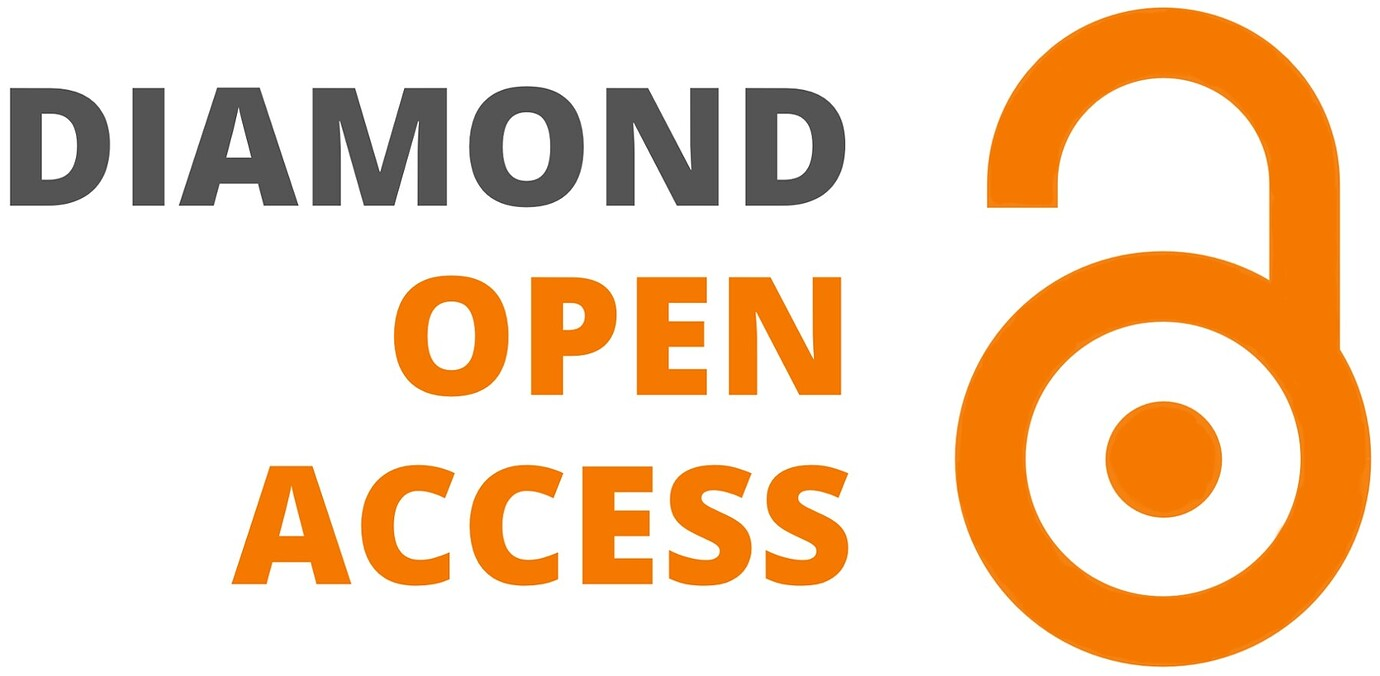Etude de validité de la batterie Examath 5-8 chez les enfants en fin de MSM
DOI :
https://doi.org/10.61989/91jpmc48Mots-clés :
Trouble spécifique des apprentissages mathématiques, Examath 5-8, évaluation précoce, prédicteurs numériquesRésumé
Contexte : Des prédicteurs du développement des habiletés mathématiques sont présents dès la fin de MSM. Ainsi, une évaluation des compétences mathématiques chez les enfants de cette classe d’âge est utile afin de diagnostiquer précocement un trouble ou dépister un risque de trouble spécifique des apprentissages en mathématiques en cas de suspicion de difficultés. À l'heure actuelle, il n'existe pas de tests récents permettant une évaluation approfondie des compétences chez les enfants de cet âge. Par ailleurs, la batterie informatisée Examath 5-8 démontre de bonnes qualités psychométriques chez les enfants de la GSM au CE2 et montre des scores saturés dès la fin de GSM pour des tâches correspondant à des compétences développementales précoces.
Objectif : L’objectif de cette recherche était d’évaluer l’acceptabilité, l’accessibilité et la validité de construit d’une sélection d’épreuves de la batterie Examath 5-8 en fin de MSM.
Méthode : L’échantillon était composé de 36 enfants en fin de MSM sans suivi orthophonique pour des difficultés en mathématiques ou langagières.
Résultats : Les résultats ont montré une bonne acceptabilité par les enfants, une bonne accessibilité pour le niveau MSM et une bonne validité de construit en lien avec le niveau scolaire (comparaison avec les GSM). D’autres études seront nécessaires pour évaluer la sensibilité et la validité discriminante de ces épreuves afin de garantir le pouvoir diagnostique de la batterie pour cette classe d’âge.
Références
Agostini, F., Zoccolotti, P., & Casagrande, M. (2022). Domain-general cognitive skills in children with mathematical difficulties and dyscalculia: A systematic review of the literature. Brain Sciences, 12(2), 239. https://doi.org/10.3390/brainsci12020239
American Psychiatric Association, Boyer, P., Crocq, M.-A., & Guelfi, J.-D. (2015). Manuel diagnostique et statistique des troubles mentaux (5e éd.). Elsevier Masson.
Badian, N. A. (1999). Persistent arithmetic, reading, or arithmetic and reading disability. Annals of Dyslexia, 49, 43‑70. https://doi.org/10.1007/s11881-999-0019-8
Barbaresi, W. J., Katusic, S. K., Colligan, R. C., Weaver, A. L., & Jacobsen, S. J. (2005). Math learning disorder: Incidence in a population-based birth cohort 1976-82, Rochester, Minn. Ambulatory Pediatrics, 5(5), 281‑289. https://doi.org/10.1367/A04-209R.1
Barth, H., La Mont, K., Lipton, J., & Spelke, E. S. (2005). Abstract number and arithmetic in preschool children. Proceedings of the National Academy of Sciences of the United States of America, 102(39), 14116‑14121. https://doi.org/10.1073/pnas.0505512102
Billard, C., & Touzin, M. (2012). Evaluation Des fonctions cognitives et des Apprentissages de 4 à 11 ans (EDA). Ortho Édition.
Billard, C., Mirassou, A., & Touzin, M. (2019). Batterie Modulable de Tests informatisée (BMT-i). Ortho Édition
Boisseau, P. (2005). Enseigner la langue orale en maternelle. RETZ.
Butterworth, B. (1999). The Mathematical brain. Macmillan.
Carey, S. (2004). Bootstrapping & the origin of concepts. Daedalus, 133(1), 59‑68. https://doi.org/10.1162/001152604772746701
Castaldi, E., Piazza, M., & Iuculano, T. (2020). Learning disabilities: Developmental dyscalculia. Handbook of Clinical Neurology, 174, 61‑75. https://doi.org/10.1016/B978-0-444-64148-9.00005-3
Cattini, J., & Lafay, A. (2024). Analyse critique des qualités psychométriques des batteries de performances évaluant la cognition mathématique. A.N.A.E., 36(190), 280-290.
Chevrie Muller, C., & Plaza, M. (2001). N-EEL - Nouvelles épreuves pour l’examen du Langage de 3 ans 7 mois à 8 ans 7 mois. Pearson.
Dehaene, S. (1992). Varieties of numerical abilities. Cognition, 44(1-2), 1‑42. https://doi.org/10.1016/0010-0277(92)90049-N
Dehaene, S. (2010). La Bosse des maths : Quinze ans après. Odile Jacob.
Devine, A., Soltész, F., Nobes, A., Goswami, U., & Szűcs, D. (2013). Gender differences in developmental dyscalculia depend on diagnostic criteria. Learning and Instruction, 27, 31‑39. https://doi.org/10.1016/j.learninstruc.2013.02.004
Dirks, E., Spyer, G., van Lieshout, E. C. D. M., & de Sonneville, L. (2008). Prevalence of combined reading and arithmetic disabilities. Journal of Learning Disabilities, 41(5), 460‑473. https://doi.org/10.1177/0022219408321128
Fayol, M., Perros, H., & Seron, X. (2004). Les représentations numériques : caractéristiques, troubles, développement. Dans M.-N. Metz-Lutz, E. Demont, C. Seegmuller, M. de Agostini, et N. Bruneau (dir.), Développement cognitif et troubles des apprentissages (p. 69‑107). Solal. https://hal.science/hal-00115939
Feigenson, L., Dehaene, S., & Spelke, E. (2004). Core systems of number. Trends in Cognitive Sciences, 8(7), 307‑314. https://doi.org/10.1016/j.tics.2004.05.002
Formoso, J., Barreyro, J. P., Jacubovich, S., & Injoque-Ricle, I. (2017). Possible associations between subitizing, estimation and visuospatial working memory (VSWM) in Children. The Spanish Journal of Psychology, 20, E27. https://doi.org/10.1017/sjp.2017.23
Fuson, K. C. (1988). Children’s counting and concepts of number. Springer-Verlag Publishing.
Gelman, R., & Gallistel, C. R. (1978). The child’s understanding of number. Harvard University Press.
Gelman, R., & Meck, E. (1983). Preschoolers’ counting: Principles before skill. Cognition, 13(3), 343‑359. https://doi.org/10.1016/0010-0277(83)90014-8
Ginsburg, H. P., & Russell, R. L. (1981). Social class and racial influences on early mathematical thinking. Monographs of the Society for Research in Child Development, 46(6), 1-69. https://doi.org/10.2307/1165946
Goffin, C., & Ansari, D. (2019). How are symbols and nonsymbolic numerical magnitudes related? Exploring bidirectional relationships in early numeracy. Mind, Brain, and Education, 13(3), 143‑156. https://doi.org/10.1111/mbe.12206
Gray, S. A., & Reeve, R. A. (2014). Preschoolers’ dot enumeration abilities are markers of their arithmetic competence. PLOS ONE, 9(4), e94428. https://doi.org/10.1371/journal.pone.0094428
Gross-Tsur, V., Manor, O., & Shalev, R. S. (1996). Developmental dyscalculia: Prevalence and demographic features. Developmental Medicine & Child Neurology, 38(1), 25‑33. https://doi.org/10.1111/j.1469-8749.1996.tb15029.x
Halberda, J., & Feigenson, L. (2008). Developmental change in the acuity of the « number sense »: The approximate number system in 3-, 4-, 5-, and 6-year-olds and adults. Developmental Psychology, 44(5), 1457‑1465. https://doi.org/10.1037/a0012682
Helloin, M. C., & Lafay, A. (2021). Examath 5-8 [Logiciel]. HappyNeuron Pro.
Helloin, M. C., & Thibault, M. P. (2006). Exalang 3-6 [Logiciel]. HappyNeuron Pro.
Hinton, V. M., Flores, M. M., Schweck, K., & Burton, M. E. (2015). The effects of a supplemental explicit counting intervention for preschool children. Preventing School Failure: Alternative Education for Children and Youth, 60(3), 183‑193. https://doi.org/10.1080/1045988X.2015.1065400
Hornburg, C. B., Schmitt, S. A., & Purpura, D. J. (2018). Relations between preschoolers’ mathematical language understanding and specific numeracy skills. Journal of Experimental Child Psychology, 176, 84‑100. https://doi.org/10.1016/j.jecp.2018.07.005
INSEE. (2020). Évolution et structure de la population en 2017. https://www.insee.fr/fr/statistiques/4515315?sommaire=4515349&geo=FE-1#ancre-POP_T6
Johnson, N. C., Turrou, A. C., McMillan, B. G., Raygoza, M. C., & Franke, M. L. (2019). « Can you help me count these pennies? »: Surfacing preschoolers’ understandings of counting. Mathematical Thinking and Learning: An International Journal, 21(4), 237‑264. https://doi.org/10.1080/10986065.2019.1588206
Jordan, N. C., Huttenlocher, J., & Levine, S. C. (1992). Differential calculation abilities in young children from middle- and low-income families. Developmental Psychology, 28(4), 644‑653. https://doi.org/10.1037/0012-1649.28.4.644
Jordan, N. C., Kaplan, D., Locuniak, M. N., & Ramineni, C. (2007). Predicting first-grade math achievement from developmental number sense trajectories. Learning Disabilities Research & Practice, 22(1), 36‑46. https://doi.org/10.1111/j.1540-5826.2007.00229.x
Jordan, N. C., Levine, S. C., & Huttenlocher, J. (1994). Development of calculation abilities in middle- and low-income children after formal instruction in school. Journal of Applied Developmental Psychology, 15(2), 223‑240. https://doi.org/10.1016/0193-3973(94)90014-0
Krajcsi, A., Szabó, E., & Mórocz, I. Á. (2013). Subitizing is sensitive to the arrangement of objects. Experimental Psychology, 60(4), 227‑234. https://doi.org/10.1027/1618-3169/a000191
Lafay, A., & Cattini, J. (2018). Analyse psychométrique des outils d’évaluation mathématique utilisés auprès des enfants francophones. Canadian Journal of Speech-Language Pathology and Audiology, 42(2), 127‑144.
Lafay, A., Cornet, N. M., & Barilaro, M. (2023). Le vocabulaire mathématique de l’enfant : revue de littérature systématique et synthèse narrative. Neuropsychiatrie de l’Enfance et de l’Adolescence, 71(8), 399‑410. https://doi.org/10.1016/j.neurenf.2023.06.004
Lafay, A., Saint-Pierre, M.-C., & Macoir, J. (2014). L’évaluation des habiletés mathématiques de l’enfant : inventaire critique des outils disponibles. Glossa, 116, 33‑58. https://www.glossa.fr/index.php/glossa/article/view/599
Lecointre, A., Lépine, R., & Camos, V. (2005). Développement et troubles des processus de quantification. Dans M.-P. Noël (dir.), La dyscalculie : trouble du développement numérique de l’enfant (p. 41‑75). Solal.
Levine, S. C., Jordan, N. C., & Huttenlocher, J. (1992). Development of calculation abilities in young children. Journal of Experimental Child Psychology, 53(1), 72‑103. https://doi.org/10.1016/s0022-0965(05)80005-0
Lewis, C., Hitch, G. J., & Walker, P. (1994). The prevalence of specific arithmetic difficulties and specific reading difficulties in 9- to 10-year-old boys and girls. The Journal of Child Psychology & Psychiatry, 35(2), 283‑292. https://doi.org/10.1111/j.1469-7610.1994.tb01162.x
Mandler, G., & Shebo, B. J. (1982). Subitizing : An analysis of its component processes. Journal of Experimental Psychology: General, 111(1), 1‑22. https://doi.org/10.1037/0096-3445.111.1.1
Mazzocco, M. M. M., Feigenson, L., & Halberda, J. (2011). Preschoolers’ precision of the approximate number system predicts later school mathematics performance. PLOS ONE, 6(9), e23749. https://doi.org/10.1371/journal.pone.0023749
Meljac, C., & Lemmel, G. (2007). UDN-II Construction et utilisation du nombre. ECPA.
Mononen, R., & Niemivirta, M. (2023). Patterns of symbolic numerical magnitude processing and working memory as predictors of early mathematics performance. European Journal of Psychology of Education, 38(1), 311‑332. https://doi.org/10.1007/s10212-021-00596-4
Rousselle, L., & Noël, M.-P. (2007). Basic numerical skills in children with mathematics learning disabilities: A comparison of symbolic vs non-symbolic number magnitude processing. Cognition, 102(3), 361‑395. https://doi.org/10.1016/j.cognition.2006.01.005
Saxe, G. B., & Kaplan, R. (1981). Gesture in early counting: A developmental analysis. Perceptual and Motor Skills, 53(3), 851‑854. https://doi.org/10.2466/pms.1981.53.3.851
Schleifer, P., & Landerl, K. (2011). Subitizing and counting in typical and atypical development. Developmental Science, 14(2), 280‑291. https://doi.org/10.1111/j.1467-7687.2010.00976.x
Schneider, R. M., Sullivan, J., Marušič, F., Žaucer, R., Biswas, P., Mišmaš, P., Plesničar, V., & Barner, D. (2020). Do children use language structure to discover the recursive rules of counting? Cognitive Psychology, 117, 101263. https://doi.org/10.1016/j.cogpsych.2019.101263
Share, D. L., Moffitt, T. E., & Silva, P. A. (1988). Factors associated with arithmetic-and-reading disability and specific arithmetic disability. Journal of Learning Disabilities, 21(5), 313‑320. https://doi.org/10.1177/002221948802100515
Tazouti, Y., Viriot-Goeldel, C., Matter, C., Geiger-Jaillet, A., Carol, R., & Deviterne, D. (2012). Pratiques éducatives familiales et apprentissages premiers à l’école maternelle française et au Kindergarten allemand. Éducation & formations. https://hal.science/hal-01862886
Turan, E., & de Smedt, B. (2023). Understanding mathematical development in preschool children: The association between mathematical language and mathematical abilities. Cognitive Development, 66, 101318. https://doi.org/10.1016/j.cogdev.2023.101318
Van De Rijt, B. A. M., & Van Luit, J. E. H. (1998). Effectiveness of the Additional Early Mathematics program for teaching children early mathematics. Instructional Science, 26(5), 337‑358. https://doi.org/10.1023/A:1003180411209
Van Nieuwenhoven, C., Grégoire, J., & Noël, M.-P. (2001). Tedi-MATH. Test diagnostique des compétences de base en mathématiques de la MSM au CE2. ECPA-Pearson.
Van Rinsveld, A., Schiltz, C., Majerus, S., & Fayol, M. (2020). When one-two-three beats two-one-three: Tracking the acquisition of the verbal number sequence. Psychonomic Bulletin & Review, 27(1), 122‑129. https://doi.org/10.3758/s13423-019-01704-8
Vogel, S. E., & de Smedt, B. (2021). Developmental brain dynamics of numerical and arithmetic abilities. Npj Science of Learning, 6, 22. https://doi.org/10.1038/s41539-021-00099-3
Von Aster, M. G., & Shalev, R. S. (2007). Number development and developmental dyscalculia. Developmental Medicine & Child Neurology, 49(11), 868‑873. https://doi.org/10.1111/j.1469-8749.2007.00868.x
Wege, T. E., de Smedt, B., Gilmore, C., & Inglis, M. (2023). Counting many as one: Young children can understand sets as units except when counting. Journal of Experimental Child Psychology, 225, 105533. https://doi.org/10.1016/j.jecp.2022.105533
Wilkey, E. D., & Ansari, D. (2020). Challenging the neurobiological link between number sense and symbolic numerical abilities. Annals of the New York Academy of Sciences, 1464(1), 76‑98. https://doi.org/10.1111/nyas.14225
Wynn, K. (1992). Addition and subtraction by human infants. Nature, 358(6389), 749‑750. https://doi.org/10.1038/358749a0
Yun, C., Havard, A., Farran, D., Lipsey, M., Bilbrey, C., & Hofer, K. (2011). Subitizing and mathematics performance in early childhood. Proceedings of the Annual Meeting of the Cognitive Science Society, 33, 680-684. https://escholarship.org/uc/item/8hs5h4f2
Téléchargements
Publiée
Licence
(c) Copyright Hermine Villalard, Marie Christel Helloin, Lafay Anne 2024

Ce travail est disponible sous la licence Creative Commons Attribution 4.0 International .




